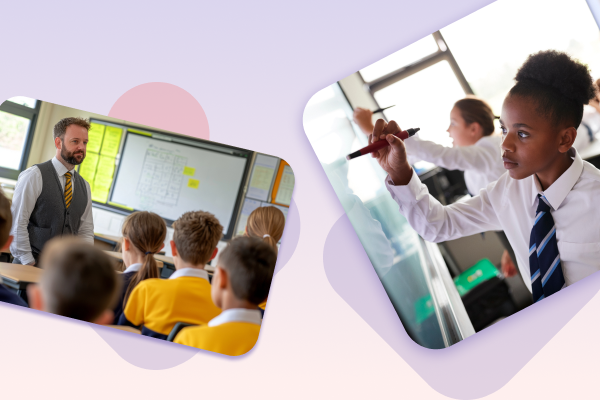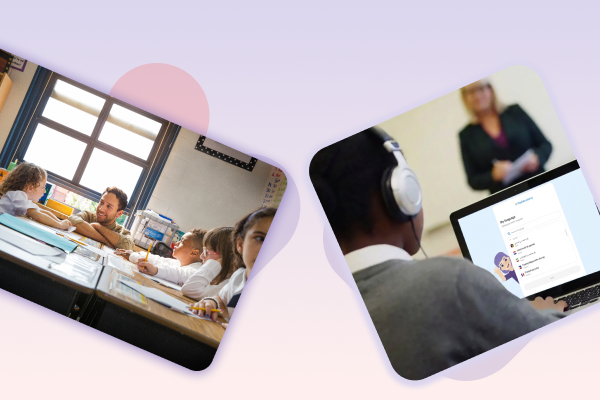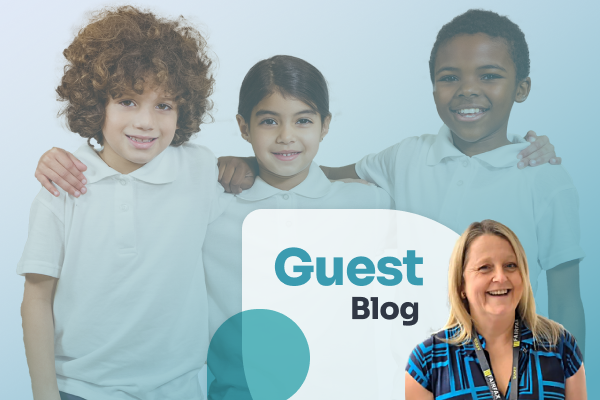

As part of our campaign on the connection between EAL and wellbeing, we’re curating insights from educators worldwide with the aim to spark a discussion around EAL and belonging, social integration and assessment. Find out more about our work on EAL and wellbeing.
In this guest blog, Hollie O’Sullivan, Associate Assistant Headteacher – EAL and Reading at Fortis Academy, shares insights into the vital role of prioritising EAL students’ wellbeing to support their language development and overall social integration.
FlashAcademy®: Why is it important to prioritise the wellbeing of an EAL student?
Hollie: As EAL students are such a diverse group, it is essential to support their mental health and wellbeing in parallel provision with their language acquisition.

Any human is incapable of learning and retaining new information if they are in a dysregulated state. All EAL students, despite their background, are dysregulated when they arrive purely from the shock of relocation. Therefore, all newly arrived EAL students need to have their mental needs met in order to have their language acquisition supported successfully.
FlashAcademy®: How does improved English proficiency make it easier for students to integrate socially and form friendships?
Hollie: As their language barrier decreases, EAL students are able to communicate socially with students from other countries, widening their support network in school. Our EAL induction programme for beginners supports this by helping students create friendships with other students who might not speak the same language but are in the same boat, so to speak.
At this stage, we also try to support friendships between more advanced students who speak the same language as the student, so that when they do transition they have a starting point for someone to hang around with on the playground. Then, as they transition, we see them choose to be friends with peers in their classes because they are able to communicate, interact and participate with these students better.
We also encourage a normalised approach to EAL induction. For example, when doing a register and I call the name of student in EAL the other students will say “Oh, he is in languages, Miss.” Our students are very familiar with all types of interventions and see being in EAL as no different to them being in reading interventions. This removes any stigma.
FlashAcademy®: How does your school embrace multiculturalism and diverse cultural backgrounds? What effect do you think this has on your students?
Hollie: We hold frequent assemblies about the importance of multiculturalism. We look at the history of immigration in Britain and how many British-born students are actually from families who migrated over pre- and post- world wars.
We talk about how the Caribbean and Irish communities were treated when they first arrived and liken that to how we treat and should treat migrants today. We also provide tangible examples of how being multilingual or multicultural can be beneficial. For example, every year we host World Culture Day where everyone in school (staff and students) can dress up in cultural clothing and attend a culture fair provided by our sixth form. This day includes music, dance, art, sports and food from all over the world. Students are always enthusiastic to try new foods and ask their friends about them.
We also do a treasure hunt in other languages so that students need to find someone who speaks that language to help them figure out the clues. This is an amazing day and really promotes togetherness and celebration.
FlashAcademy®: Why do you think it’s important for parents to get involved in their child’s EAL education?
Hollie: We encourage EAL families to speak in English at home as much as possible. In the past, we have offered free English classes for parents in our school library. It is also important to make telephone communications as quickly as possible so that families become comfortable speaking with the school. If you have a staff member available to support translation then all the better, but if not the Google Translate app has a speech function that works well and can be helpful to make the first steps.
Encourage families to attend parents evenings as much as possible, or you can hold informal coffee mornings for EAL families, which can be less intimidating for them. Sending home an EAL newsletter with photographs of the work their children has been doing is another way to break down that barrier between parents and school.
It is essential that teachers across the school have proactive relationships with parents in order to support EAL needs, including relating to language, behaviour, attendance or safeguarding. Any praise or concerns need to be communicated with parents as EAL students will often “hide” in the hope that parents will just assume they are fine.
It can be dangerous for a child to be the only person communicating with a parent about school. For example, we knew a boy whose father would never answer the phone or engage with the school. We carried out a home visit we discovered the boy was living unaccompanied. We were able to get him into care and looked after, but the man who had presented himself as “dad” during the admissions meeting was not a family member at all and the police were informed.
FlashAcademy®: What strategies do you use to improve your EAL learners’ mental health and wellbeing?
Hollie: We try to tackle mental health in our EAL students using a range of different strategies.
Art therapy can be an amazing way to support mental health through a non-verbal form of therapy with a trained psychotherapist.
We are lucky enough to have an EAL garden that the students design, plant and maintain throughout the year. This gives them a sense of pride, ownership and belonging to the wider school community, especially when visitors comment on their beautiful garden. I remember the first time we ever took a group down there and a young boy who had been incredibly withdrawn since he arrived was suddenly very active and smiling. When I asked him if he was enjoying himself, he said “In my home country my family are watermelon farmers, I used to harvest 1,000 watermelons every day”.
Some of our staff, myself included, have also become trained Thrive Licensed practitioners. This allows us to offer CBT (Cognitive behavioural therapy), which can be adapted for groups or 1:1 and use a range of therapies to support the mental health and wellbeing of students. The course costs around £1,500 per person and the training lasts for 18 months but once licensed, you can provide a range of support for a variety of needs.
I have loved seeing the improvement of my students well being when they realise that they are safe, understood and cared for.
For more information on the link between EAL and wellbeing, visit our webpage.

